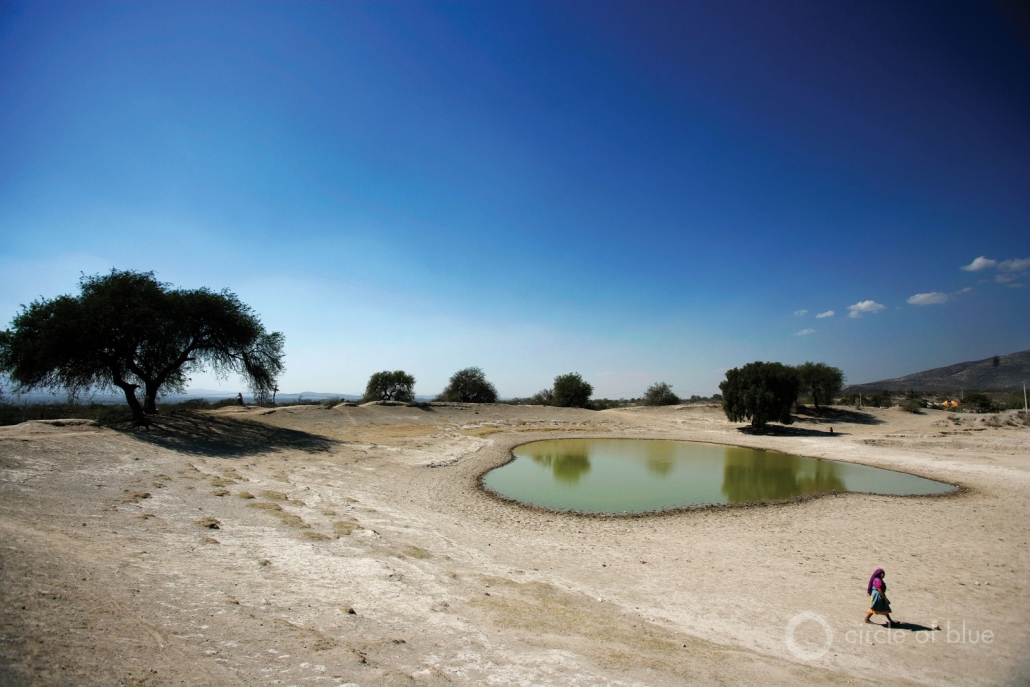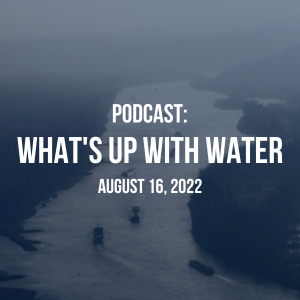Poor residents in Monterrey are buying bottled water from companies that extract groundwater from beneath their feet.

Tehuacán Valley, Mexico (file). Photo © Brent Stirton / Reportage by Getty Images for Circle of Blue
By Laura Gersony, Circle of Blue — August 15, 2022
Months after the taps ran dry, the city of Monterrey still heaves under massive water shortages.
Mexico’s manufacturing heartland has seen lower-than-average rainfall since January. For the first time since 1960, the month of March came and went without a single drop of rain in the northeastern state of Nuevo León. Hardship swiftly followed: the government began periodic water shutoffs in early 2022, and declared a state of emergency in June.
The current water shortages continue the region’s seven-year dry spell, an event that climate scientists link to the warming of the planet. Water shortages have hit Monterrey almost every year since 2015.
Officials last month announced a new water rationing plan that they say will secure the city’s long-term water supply for the next eight to 10 years. But any long-term response must confront the historical squeeze at the region’s core: that urban growth is outpacing infrastructure capacity. Monterrey’s economic development, ignited by the 1994 North American Free Trade Agreement, supercharged its growth. The population has doubled since the early 90s.
Money poured in, but water resources suffered. Experts have warned for years that rapid residential growth, contamination of freshwater sources by manufacturers, and the unquenchable thirst of industry is pushing the city to a breaking point. Water consultant Jessica Hernández told Inside Climate News that the city has two pinch points. It has not invested enough in the storage necessary to sustain its growing population, and managerial gaps handicap water distribution plans.
“Sometimes there is no institutional capacity to manage that availability, or there are no operation policies for the storage systems,” Hernández said. “There is where a lot of capacity to deliver water is lost.”
The result is inequitable access to water.
While wealthier homes often have cisterns or access to private gyms, millions of people are rationing murky, green water from tanker trucks. The government has had to crack down on illegal water siphoning from the few pipes that still flow. In May, thirsty residents threatened a municipal water worker, demanding more supply.
In some areas, residents’ only option is to buy bottled water from companies that still extract water from wells in their backyards.
“How do you assign a price to water? It’s a human right,” Jaime Noyola, director of the public interest advocacy group Alliance of Users of Public Services, told the Guardian. “But these companies, namely Coca-Cola, in selling bottled water as the only potable water source, have made their product obligatory. Now water costs nearly as much as gasoline.”
Noyola alleges that corruption among local leaders is stopping much-needed reforms.
An investigation by the advocacy group Mexicans Against Corruption found that the government does not collect accurate water-use data by private companies that have received concessions to use water. Only a fraction of these companies have installed legally mandated water meters.
A group of drinks companies has pledged to donate about 28 percent of its water, though the industry continues to extract what amounts to billions of liters annually. The phrase “No es sequía, ¡es saqueo!” is the refrain of angry communities: “It’s not drought, it’s theft!”
President Andrés Manuel López Obrador said on Monday that northern Mexico should stop producing beer.
The next significant rainfall is forecast for September.
Circle of Blue first reported the connections between water stress and migration in Mexico in the special report, Tehuacán: Divining Destiny.
Laura Gersony covers water policy, infrastructure, and energy for Circle of Blue. She also writes FRESH, Circle of Blue’s biweekly digest of Great Lakes policy news, and HotSpots H2O, a monthly column about the regions and populations most at-risk for water-related hazards and conflict. She is an Environmental Studies and Political Science major at the University of Chicago and an avid Lake Michigan swimmer.




